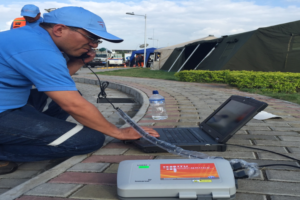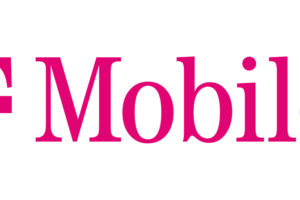How ITU provides emergency telecommunications in a pandemic

“We have to prepare everything in advance so that when a disaster strikes, the only thing that we have to do is pack the equipment and take it to where it is needed,” explained Jake Spinnler from ITU’s Emergency Telecommunications Division.
Spinnler is part of the ITU Emergency Telecommunications team and currently coordinating ITU’s Emergency Telecommunications Roster (ETR), a voluntary group of ITU staff from across the organization on stand-by to deploy the services on short notice.
“In the last few months, we have been checking and testing the satellite phones and Broadband Global Area Network (BGAN) terminals to see if the equipment is complete, if it works correctly or we need to buy spare parts,” added Spinnler, who has been trained to use emergency telecommunications equipment, helping to ensure vital communication networks are maintained during relief efforts.
The year of disasters
Disasters don’t stop during a pandemic. In 2020, 389 disasters impacted 98.4 million people globally.
Additionally, according to the recently released Intergovernmental Panel on Climate Change (IPCC) report, Climate Change 2021: The Physical Science Basis, extreme weather events that we are facing today – from cyclones in India to devastating floods in China, widespread wildfires in North America and enduring droughts across Africa – are set to continue and worsen in the decades to come.
Telecommunication networks are critical to coordinating relief efforts, but are often destroyed when disaster strikes.
At the request of Member States, in the aftermath of a disaster, ITU deploys temporary information and communication technology (ICT) solutions to help restore telecommunication links needed for response efforts. The ITU ETR is a new addition to this service.
“I have visited nearly all countries in the world, taking this equipment to help them to use it for response coordination efforts and assist in recovery from disasters,” said Maritza Delgado, ITU’s Emergency Telecommunications Programme Officer.
“Sometimes these are the only phones that are available in the disaster zones, and the only channel for organizations to coordinate with different stakeholders in charge of overall disaster management.”
Direct impact on the ground
Although training was largely conducted online during the COVID pandemic – from using the equipment to personal safety training – some aspects still need to be done in person.
To ensure life-saving equipment is in full working order, the ETR team needs to test it regularly. This equipment includes BGAN terminals, Iridium satellite phones and other terminals.
“As a Radiocommunication Engineer, working with these satellite devices is a great opportunity for hands-on experience,” said Veronique Glaude, Senior Radiocommunication Engineer in ITU-R. “This equipment is vital to assist first responders for timely communication and enable them respond to the humanitarian needs of the affected individuals and communities. It is a real honour for me to be part of that process.”
For many ITU staff, being part of the ETR has had a positive impact on their work at ITU.
“One of my roles in ITU is Acting Advisor to ITU-T Study Group 2, which plays a leading role in ITU standards development for disaster relief, early warning, network resilience and recovery. The ETR provides a direct connection between theory and practice,” said Rob Clark, Study Group Project Coordinator in ITU-T.
“Being part of the ETR has enlightened me on the role that ITU is playing alongside its partners in the field of emergency telecoms and disaster relief. It also reminds me of the direct impact of ITU’s work on the ground. This is a useful perspective to incorporate into my ‘day job’ supporting ITU members’ development of international telecommunication standards,” he said.
During the COVID-19 pandemic, with in-person deployments suspended due to travel restrictions, ITU strengthened partnerships with satellite providers to provide the necessary connectivity and equipment.
These partnerships ensured that ITU could continue to support countries in the aftermath of disasters.
[Source: ITU]


